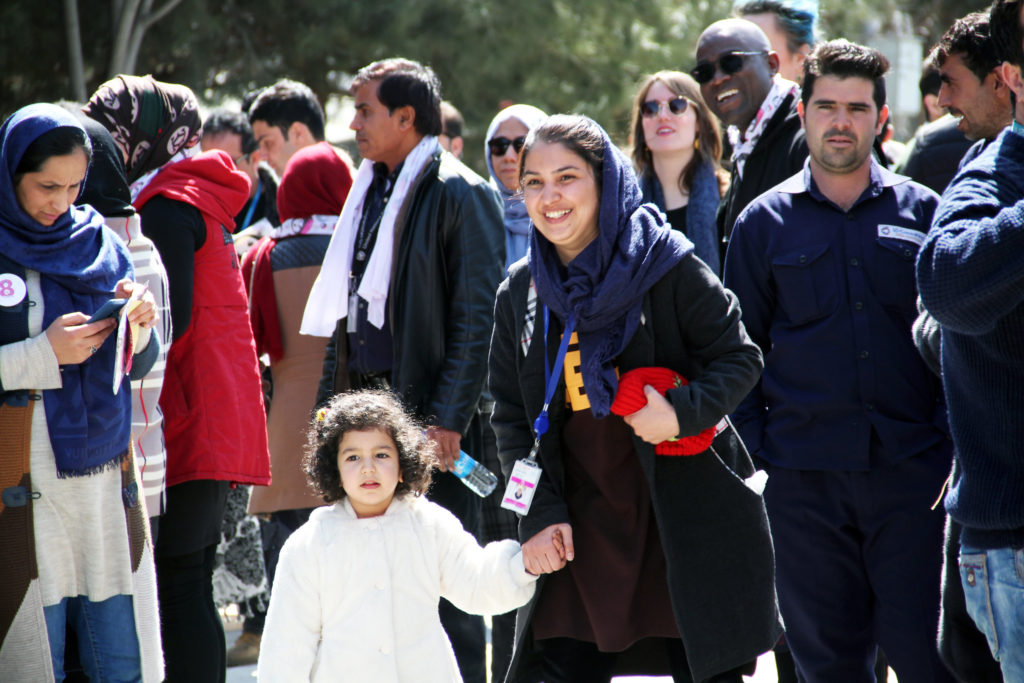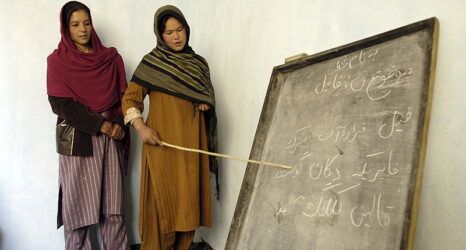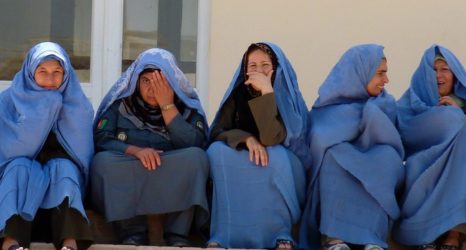This post is the fourth in a four-part series.
The Loya Jirga, or grand assembly, held in Kabul from late April to early May, brought together at least 3,200 Afghans—of which roughly 30 percent were women—to discuss a framework for talks with the Taliban. The five-day gathering ended with a 23-article resolution that included demands to end the bloodshed; preserve the constitution; safeguard women’s rights, including the right to education; and include women on the negotiating team.
While Afghans are plenty critical of their current government, few seem to think of the Taliban as a more palatable option. “People say the U.S. Congress is dysfunctional,” Eleanor Smeal, Feminist Majority Foundation president and publisher of Ms., points out, “but not for a moment would we think of turning over the country to terrorists—and neither would the Afghans.”

Some Taliban representatives insist that they have evolved since the late ’90s, though they hedge on details. Wazhma Frogh, founder of the Women & Peace Studies Organization and member of Afghanistan’s High Peace Council, has yet to see evidence of any shift in ideals. She cites incidents in 2019 where the Taliban executed women, burned down girls’ schools and threatened women, including teachers, for working outside the home. In areas under Taliban rule, tribal courts frequently mete out punishments like amputations and executions. While the Taliban assert they will support education for girls, one has to wonder if this is limited to religious education and not the secular education that would enable them to take part in the economy and governance of the country.
Frogh has personally engaged in informal dialogue with several members of the Taliban and served alongside their ministers and moral police chief on the High Peace Council. “They don’t have [a] response to women’s arguments,” she says. “That’s why they keep avoiding meeting and talking to women.”
Many members of the U.S. Congress, especially the women members, understand the dangers of excluding women from the negotiations. Led by Reps. Lois Frankel (D-Fla.) and Susan Brooks (R-Ind.), 77 members of the House sent a letter in early June to Secretary of State Mike Pompeo. In it, they wrote that as negotiations continue, “women’s perspectives and the preservation of women’s rights and human rights should be at the center of your efforts, including by ensuring that women have a meaningful seat at the table.”
Rep. Carolyn Maloney (D-N.Y.), who took to the House floor in 2001 dressed in a burka while speaking on the Taliban’s misogynistic rule, believes the U.S. should “continue to support the Afghan Constitution and the democratic system that we helped to build, which benefits all Afghan people and contributes to stability in the Middle East.”
Rep. Pramila Jayapal (D-Wash.) adds: “By having these women, with their expertise and firsthand knowledge, as a part of the peace negotiations, we are more likely to strategize a peaceful exit from the war in Afghanistan that can include locally rooted solutions that will minimize negative impacts that could be caused by a withdrawal.”
Sen. Jeanne Shaheen (D-N.H.), sponsor of the Women, Peace and Security Act, cautions against sidestepping her bill. “I wrote this law understanding the statistics… which show that when women are at the negotiating table the likelihood the agreement will last long term increases by as much as 35 percent,” she says. “In order to protect the progress that’s been made in Afghanistan, it is in the United States’ best interest to ensure women are fully involved in the peace process.”
In April, Shaheen met with Afghan women in Kabul and heard their priorities directly. “First, these women want an end to the war,” she says. “But they also made it clear that they don’t want to go back to the lives they lived under Taliban rule and they want to be engaged in the future of their country to ensure the safety and freedom of all women and girls.”
Afghan Ambassador to the U.S. Roya Rahmani, the first woman diplomat to hold that post, warns against attributing the marginalization of Afghan women to cultural differences, and wishes more people saw the agency Afghan women have gained since the ousting of the Taliban. To that end, the social media campaign #MyRedLine, started by journalist Farahnaz Forotan in March, has not let up.
“I feel like school is my home. Going to school is my red line,” says one Afghan girl in a video from the campaign. “I am a lawyer and defending women’s rights is my red line,” another participant says.
“It’s the Taliban who needs to change their ideology, not us,” Mina Rezaee, a coffee shop owner in Kabul, told The New York Times. “That’s my red line.”

This piece is excerpted from a feature in the Summer 2019 issue of Ms.
To fuel our critical reporting on global women’s rights and snag a copy before it hits newsstands, become a member today!
To read more from the issue, check out the excerpt archive.





